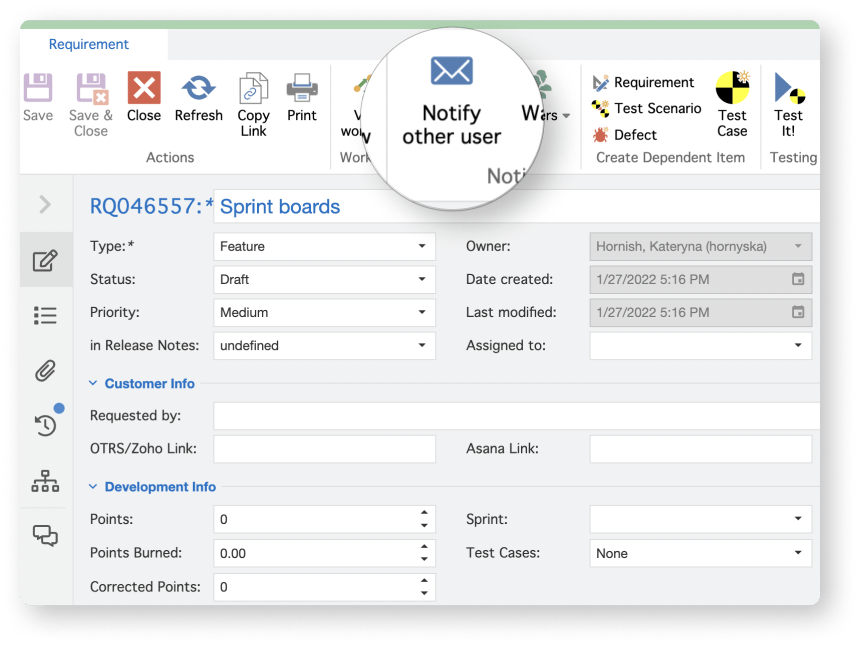Even though there is a general recommendation for coping with the overwhelming testing volumes, many QA managers still struggle to integrate efficient practices into their work. Sometimes it is because of lacking experience, but sometimes, it’s just ignoring the basis that could set a good and efficient process.
Too much effort towards automation
Automation is a popular trend amongst testers. And even though it seems very beneficial for many reasons, such as time-saving, tech-wise, etc., it might be another QA manager pitfall. Testers obsessed with automation forget about the primary goal of testing — to improve your product through testing. What they do right now is automate every level of the product.
Recently, famous QA blogger Daniel Knott made a reasonable point about why total automation is unhealthy — “Customers don’t care if your software is automated to 100%. They care, for example, if the final product still has critical issues.”
Preparation of QA team for test automation sometimes takes so much time that initial data might be changed by the start of actual testing.
And here is advice from him on how to avoid this test manager mistake:
Automation is good for sure, but everything should be in moderation.
Overly detailed documentation
There are a thousand articles about the importance of proper documentation. However, there are just a few articles about how overly detailed documentation can kill the success of your testing.
We mentioned above that some data could often be changed. And running the same tests over and over again on them might be unnecessary and even “dangerous,” mainly because this kind of test is usually the source of overly detailed documentation. And unfortunately, developers have to spend more time diving into all these redundant details. If you know how to omit extras, you are golden. But if you don’t, you better find the proper software to help you.
Using QA test management software is an excellent way to avoid overdoing docs. Such software usually has an interface that can help you not overlook essential details but simultaneously don’t pollute your report with redundant information. For example, aqua natively navigates you through the entire process of creating a bug, giving prompts not to forget the main details and letting you add necessary information later. Such an approach was designed to help you avoid superfluous details.
Keep track of all your QA documentation in one place
Dismissing team spirit
Successful testing is a team game. Companies that lack collaborative culture sabotage their prosperity on a very inside level. Neglecting communication, diplomacy, respect, delegating and owning up to your mistakes can turn out ugly for them. They are especially taking into account the fact that unhappy employees contribute less to their work. While happy workers are 13% more productive, said in the Research by Oxford University’s Saïd Business School.
So here is the main idea to avoid one of these QA manager pitfalls. Even if you deliver criticism, you need to stay polite and diplomatic. Don’t go personal, even though it seems to have something to do with the actual employee. You all strive for professionalism, but you can never skip the private life element out of your work.
If you still struggle to stay out of personal affairs, try to use software that minimises real-life interaction with an employee but simultaneously encourages communication. Depending on your software, it can be chats, emails, or comments under your projects. Here are some articles that you can read to compare some tools:
It is easy to say that YOU, as a QA, missed something, but you have to remember that YOU didn't create the business ask, YOU didn't write the requirement, YOU didn't code the feature. When something gets missed, it is easy to lay the blame on QA. Sure, we are often the last line of defense, but someone else had to miss something earlier down the line before it even gets to us.
Not utilising all functionality of your bug-tracking software
Go big or go home. This unofficial Texas slogan plays well for quality assurance as well. Just as people only use 90% of their smartphone functions, testers don’t always use their software to the fullest. For example, they discuss bugs in messengers, and write defects down in Excel, and the tests are already carried out in software. So why do you even pay for this software?!

aqua’s email option
Bite more than you can chew
Another sin among test manager pitfalls that testers sometimes don’t notice is a vast amount of work. Imagine a situation when a product is almost ready, but QA is incorporated in the latest stage. So here is no chance to start small. You must check the entire front and back end of the product.
It is enormous pressure on testers as they become the only people who delay development — they can’t perform tests that fast. Time is money, and money is time.
It is difficult not to overlook defects if there is too much data to test. The best managers know how to “divide and conquer”. The main secret is to break a more extensive picture into small pieces and prioritise them. Apparently, code is more important than design; security is more critical than pop-up forms, etc. And don’t forget to discuss with the developers what needs to be tested first not to delay further development.
Ignoring the continuous improvement approach
Failing to prioritise continuous improvement in the QA process can lead to stagnation and inefficiency. Without ongoing efforts to refine testing methodologies and practices, you will miss opportunities for optimisation and fail to adapt to evolving requirements and industry standards. This QA pitfall can have a moderate to significant impact on the effectiveness and competitiveness of the QA process over time.
Encourage regular retrospectives to identify areas for enhancement, invest in training and actively seek feedback from team members and stakeholders. Implement mechanisms for tracking and monitoring progress towards improvement goals to ensure accountability and progress.
Lack of Stakeholder Engagement
Neglecting to involve stakeholders in the QA process can result in misaligned expectations, missed requirements, and dissatisfaction with the delivered product. When stakeholders are not engaged, there is a higher risk of delivering a product that does not meet their needs or preferences. This mistake can significantly impact project success and stakeholder satisfaction, potentially leading to costly rework, delays, or even project failure.
To prevent this mistake, prioritise stakeholder engagement throughout the QA process. Establish clear communication channels, involve stakeholders in test planning and review sessions, and solicit feedback regularly. Actively listen to stakeholder concerns and address them promptly to ensure alignment of expectations and requirements. Regularly communicate progress and milestones to keep stakeholders informed and involved in the QA process.
Steps to improve the QA process as a manager
Now that you have learned the most common QA mistakes and their solutions, we want you to be as strategic as possible to avoid repeating the same mistakes. Is there a strategy to lean on? Well, there is no need to worry; we got you covered. As a manager, here are steps you can take to improve the QA process:
- Establish Clear Objectives: Define clear goals and objectives for the QA process, aligning them with the organisation’s overall quality objectives and strategic initiatives.
- Implement Standardised Processes: Develop standardised QA processes and procedures to ensure consistency and repeatability in testing activities across projects and teams.
- Invest in Training and Development: Provide ongoing training and development opportunities for QA team members to enhance their skills, knowledge, and expertise in testing methodologies, tools, and technologies.
- Foster Collaboration and Communication: Encourage collaboration and communication between QA team members, developers, stakeholders, and other project stakeholders to facilitate knowledge sharing, problem-solving, and cross-functional teamwork.
- Embrace Automation and Tooling: Embrace automation tools and technologies to streamline repetitive testing tasks, improve efficiency, and enhance test coverage. Investing in the right QA tools, including advanced QA management or application testing tools tailored to your organization’s specific needs and objectives, will help optimize testing efforts and ensure the delivery of high-quality software products.
- Continuously Monitor and Evaluate: Implement mechanisms to continuously monitor and evaluate the effectiveness of the QA process, collecting feedback, metrics, and performance indicators to identify areas for improvement and optimisation. Always make your decisions based on the data, but never guesses or just advice.
If you implement all the steps, the chances are you will avoid the most common rookie mistakes in QA and start focusing on continuously learning and growing as a professional.
Conclusion
Quality assurance is a rather stressful and time-consuming process which can be ruined by a single QA manager mistake. And if the manager knows what tools to choose and what mistakes to avoid and minimise the stress of his employees, then they can not be afraid of the quality of his product. But by eliminating problems at the start, you can reduce development time and prevent budget drain.
Cut redundant clicks and save time for better testing


















